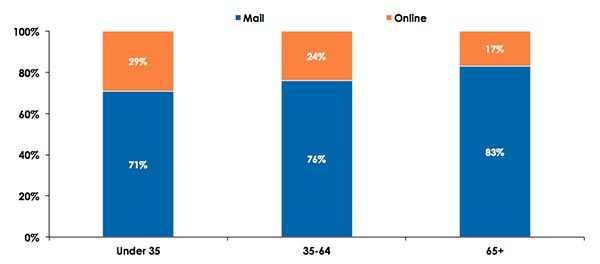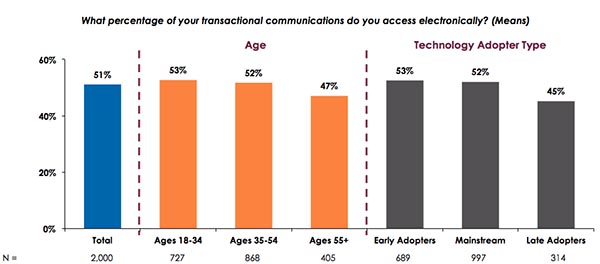Yesterday we shared how USPS mail volume has declined dramatically since 2006, down about 30%. Today we ran across an article that clarifies where some of that drop comes from.
“In its most recent Household Diary Study, the US Postal Service reported that digital alternatives for transactional payments have significantly affected the volume of mail-based bill payment,” writes Eva Padula in What They Think.
In other words, consumers are paying more of their bills online, rather than mailing a check. That said, they still adamantly insist on having a choice in how to receive those bills.
“Despite this decline in mail-based payments, US consumers still receive most of their recurring bills and statements via the postal service,” Padula continues.

Sources: HDS Recruitment Sample and USPS Household Diary Study, 2018
What this boils down to is consumers want a choice … and they are getting annoyed by companies asking them to switch to digital delivery.
“Nearly half of consumer respondents (47%) reported that they wished their providers would stop asking them to “go paperless” because they liked receiving paper mail,” Padula continues. “Perhaps more importantly, early adopters of technology were especially likely to agree with this statement. Even the most tech-savvy respondents are maintaining a preference for printed communications.”

Sources: HDS Recruitment Sample and USPS Household Diary Study, 2018
From personal experience, a friend learned it’s far too easy to miss critical account information when it’s buried in the deluge of emails or texts. Her escrow account changed late last year, and she didn’t receive a paper statement on it, just a notice in her online account inbox. She rarely logs on there, since her mortgage payments are scheduled via her online bank account. Long story short, her mortgage was considered “late” in December because she hadn’t known the amount due changed; she didn’t know this until the mortgage lender called. This kind of surprise simply wouldn’t have happened if she’d been receiving paper notices.
The take-away for brands is that consumers are demanding this choice.
“As a result, all businesses must embrace the diversity of consumer preference,” Padula concludes. “Not all young, tech-savvy consumers will completely abandon paper for digital, just as not all older late adopters will be resistant to digital communications. In today’s environment, no single communication channel will deliver the experience that an entire customer base—or even an individual customer—demands.”
